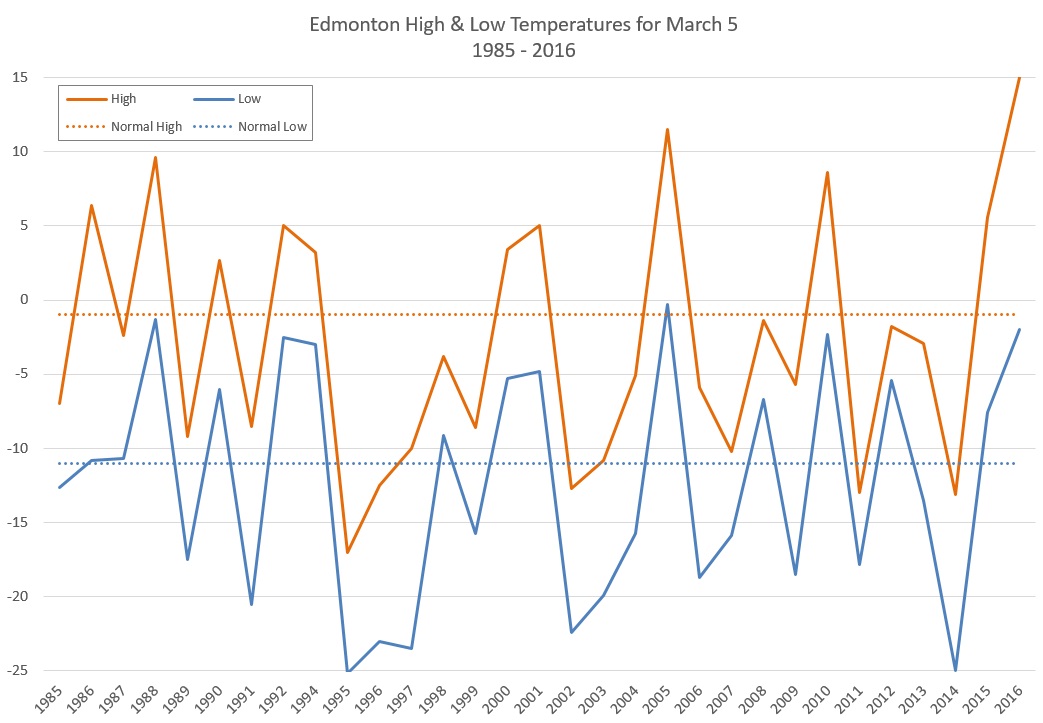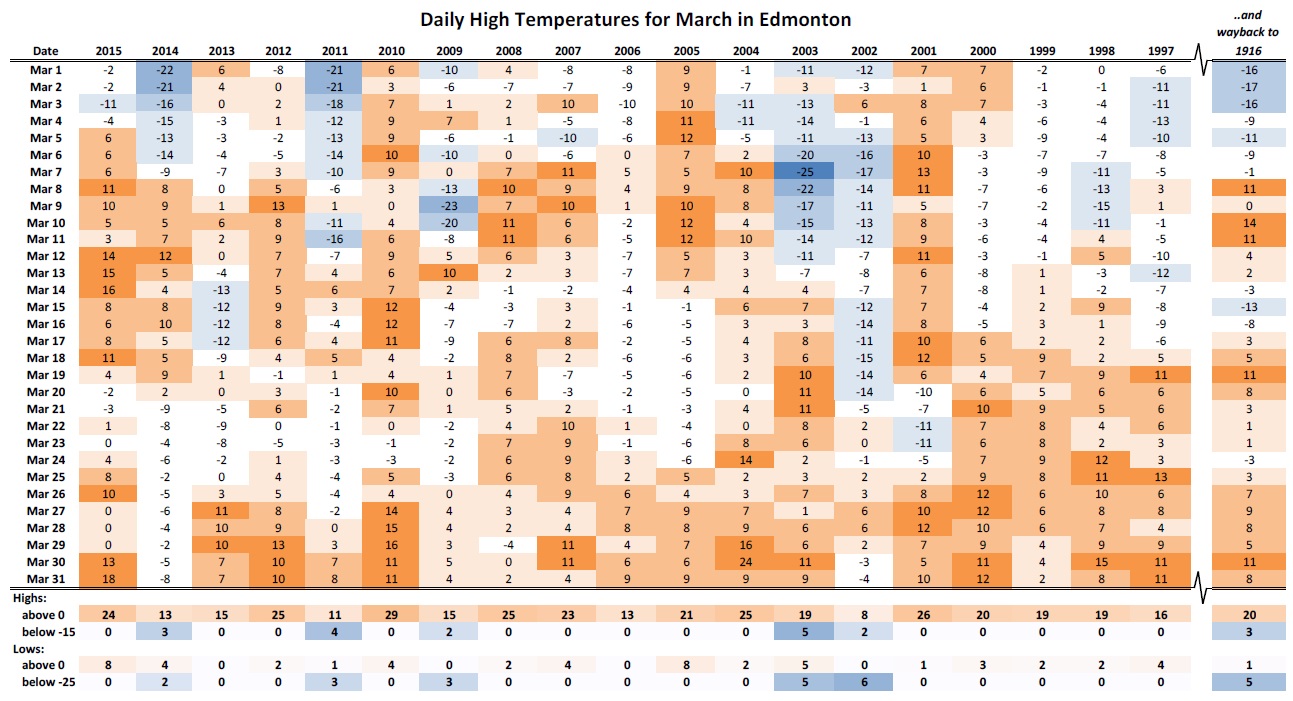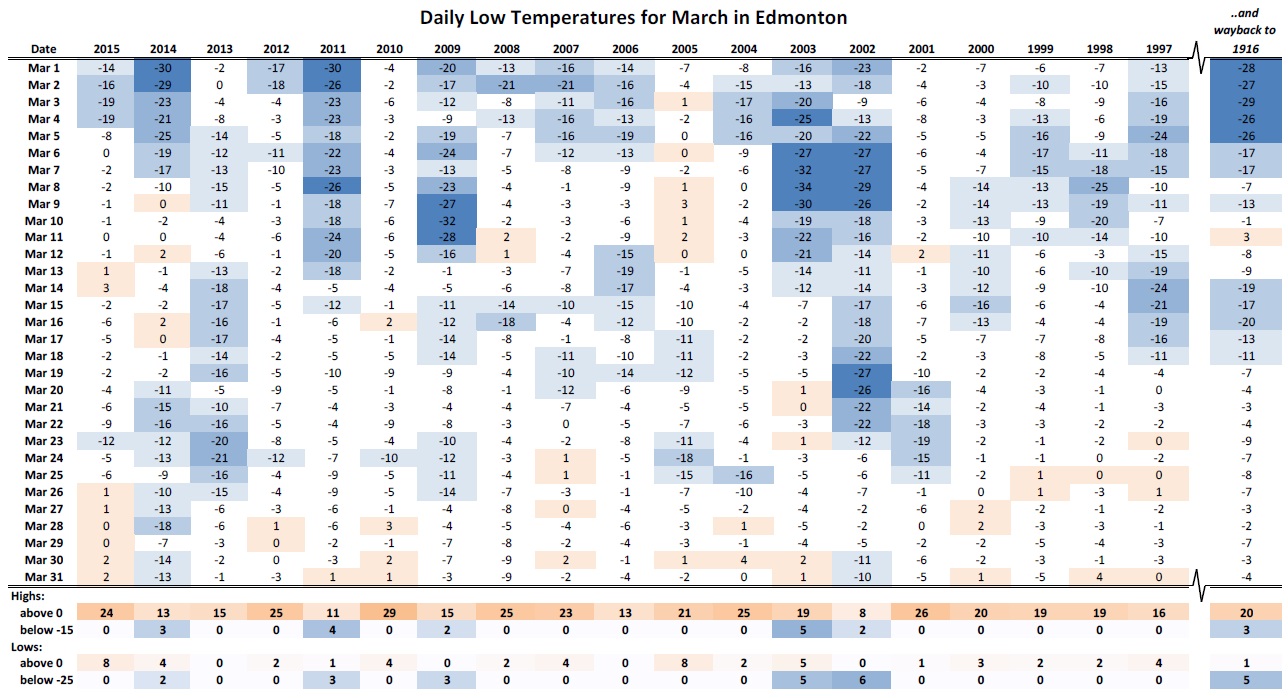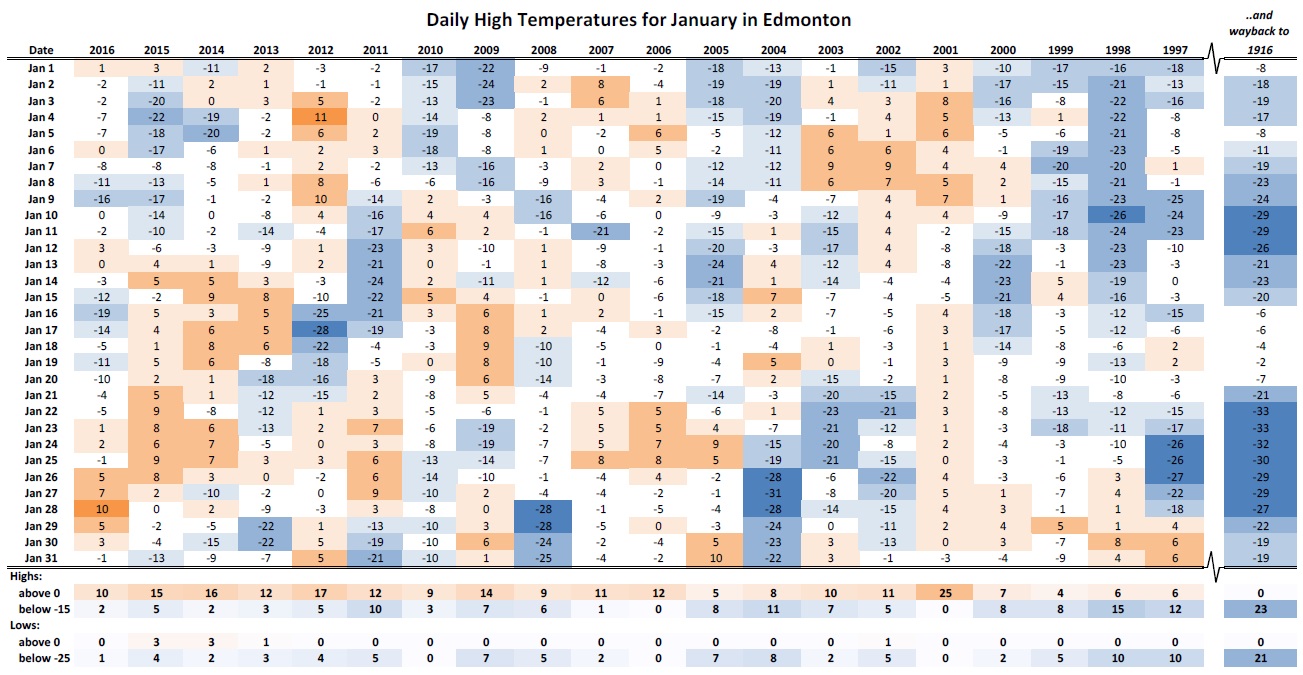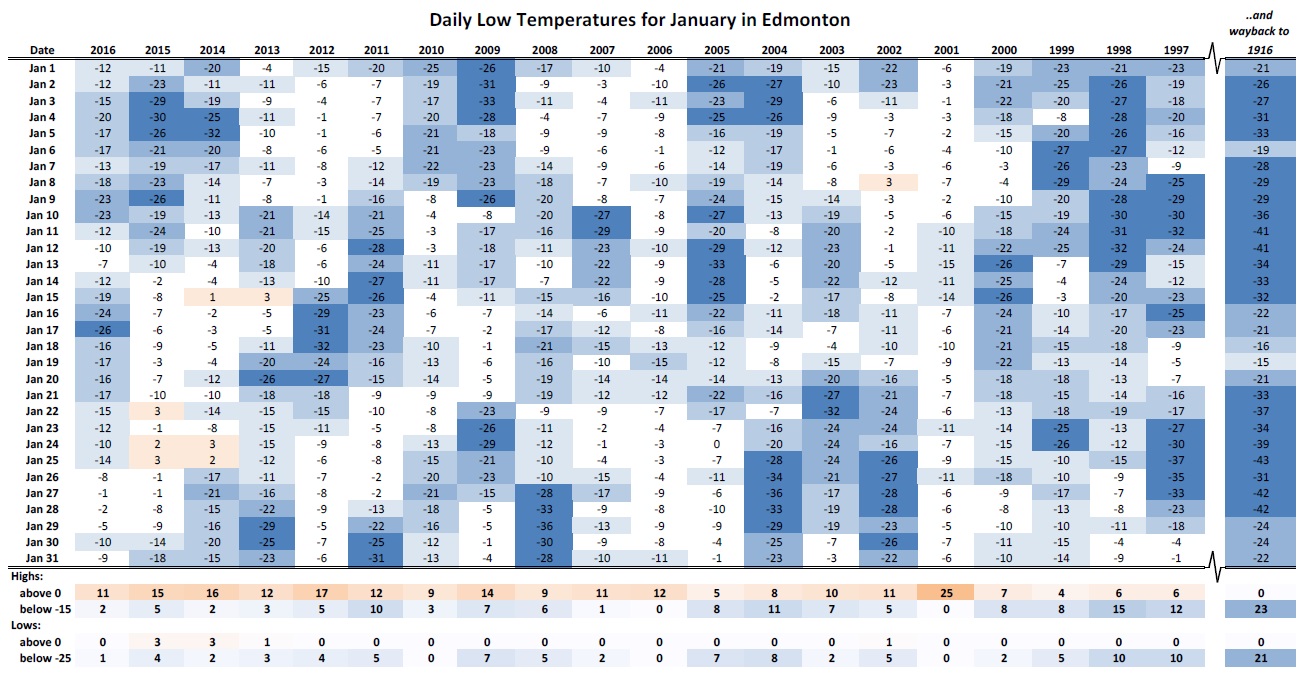“Someday from this ragged collection of tents a great city will arise”
-- Rev. Angus McQueen, 1881
That comes from a piece of public art that is located on Victoria Promenade, and it gives a nice sense of how Edmonton has changed since the 1880's. In the last few weeks I looked at how Edmonton's winters have warmed over the last century, but considering that it has grown from a camp of about 200 people to a CMA of 1.36M wouldn't we expect it to get warmer?
Cities are warm. When a small area is filled with people and vehicles and buildings those all generate heat, and then that heat is retained by all of the concrete and asphalt. This is known as the heat island effect, and it is separate from climate change, because climate change is global while heat islands are local.
To see how much of an impact the heat island effect has had on Edmonton's winters I'm going to look at some of the nearby rural stations. A natural comparison would be the infamously cold Edmonton International Airport, but it only has data going back to 1961. I would like to go further back than that though, and so the Environment Canada stations that I'll be looking at are:
These three stations have 87 years of overlapping data from 1915-1916 through 2002-2003. They also seem to be a nice distance away from Edmonton - not too close, but not far enough that they're into chinook country or past the treeline.
Calmar currently has a population of about 2,100 people, and is 35km as the crow flies from downtown Edmonton. Sion and Campsie are 54km and 97km away respectively, and both are part of the county of Barrhead, so unfortunately specific population numbers aren't available.
To give some context for Edmonton in 1915: from 1911 through 1914 the population grew from 24,900 to 72,516 which included the annexation of Strathcona. But then in 1915 it fell by 18% to 59,339 with the start of World War I and the ensuing recession. By starting the comparison in 1915 we will be looking at a period when Edmonton had already grown into a city, although at that point it may or may not have met the expectations of Rev. McQueen.
These charts are going to have a lot of data, so to try to keep them readable Campsie, Calmar and Scion are all pushed to the background. The specifics of one station are less important than how Edmonton compares to all the rural stations in general
Looking at the average temperatures for each winter, for the high temperatures Edmonton has been fairly middle-of-the-pack over the course of the 87-year comparison. For the low temperatures though, Edmonton is consistently above the 3 rural locations, with gaps typically ranging between 3 and 5°C.
For the number of winter days above freezing, the distribution looks similar to the daytime highs with Edmonton firmly in the middle of all of the stations.
For the days below 20°C though, Edmonton moves to the bottom of the pack (which is a win, in this case). Out of the 87 years, there were only 10 when any of the rural stations had fewer cold days than Edmonton.
And that continues for the very cold days below -30°C and -40°C, with Edmonton consistently recording the fewest. Edmonton last recorded a -40°C in 1972, but for the rural stations that was still an occasional occurrence through the 1990's. And below -30°C the rural stations typically had two or three times more days per year than Edmonton.
Here are Edmonton's 10 coldest days from 1915-1925 compared against the 10 coldest from 1993-2003. We can see that Edmonton's coldest days have gotten noticeably less cold, from around -43°C to -35°C.
On those really cold days the gap between Edmonton and the Calmar and Campsie stations has actually increased. The rural stations have gotten warmer, but Edmonton has gotten warmer faster. Where Edmonton used to be 3°C to 5°C above the rural stations on the coldest days, there is now a difference of 8°C or 9°C. The Edmonton International Airport is quite close to Calmar, and I assume that this is what we're seeing on those occasions when the airport reports "
the second coldest temperature on earth!" while downtown is a comparatively balmy -35°C.
We only get a few super-cold days each winter, and so their impact averaged across a winter is pretty minor. Here we see how the low temperatures have changed for each station over the decades, which smooths out the data a bit. Edmonton is right inline with Calmar and Campsie, with an increase of about 5°C over the 87 year period.
Looking at the trends Edmonton
might be warming a bit more than those two stations. These are just "best-fit" lines, but they show that the Edmonton increase is a degree or two faster per century
(for anyone curious, the R² are pretty weak, ranging from 0.05 to 0.2). That gap hasn't been reflected in the nominal change over that last 87 years, but that might just be a fluke due to having a cold 1915 and a warm 2003 as the start and end points.
But what's going on with Sion?
I have no idea. Sion has warmed the most of the four stations, with the lows increasing by 2~3°C more than Edmonton's. Is it a microclimate; or is it impacted by nearby industry or a body of water; or is it bad data that is skewing things? I have nothing to compare it against, because unfortunately there aren't any other nearby stations with a similar range of data.
So then what about the heat island effect?
In my last few posts I looked at how Edmonton's winter has changed since the 1880's, but in the background there was always the question of how much of that was due to Edmonton's growth as a city.
It's true that Edmonton does not get as cold as the rural locations, but that was also the case in 1915. We do see some changes at the extremes - the -30°Cs and -40°Cs - but averaged across an entire winter, or just looking at the warm days the results for the rural stations are similar to Edmonton. Sion has warmed more than Edmonton, and Calmar and Campsie have warmed about as much, or maybe a little bit less.
So it looks like the heat island effect might take the edge off of winter's coldest days, which is certainly appreciated. But for the overall warming of Edmonton's winters over the last century, not very much of it is due to the move from tents to highrises.

































